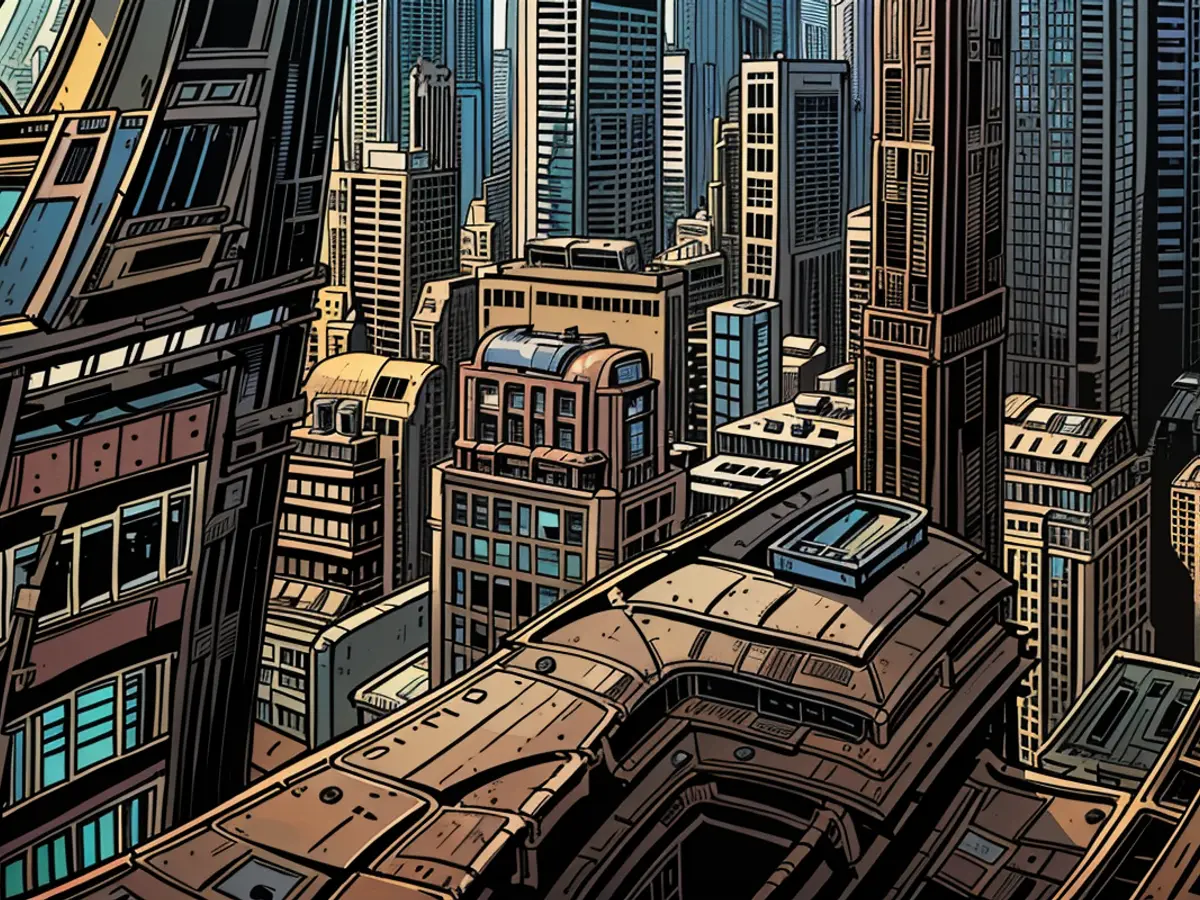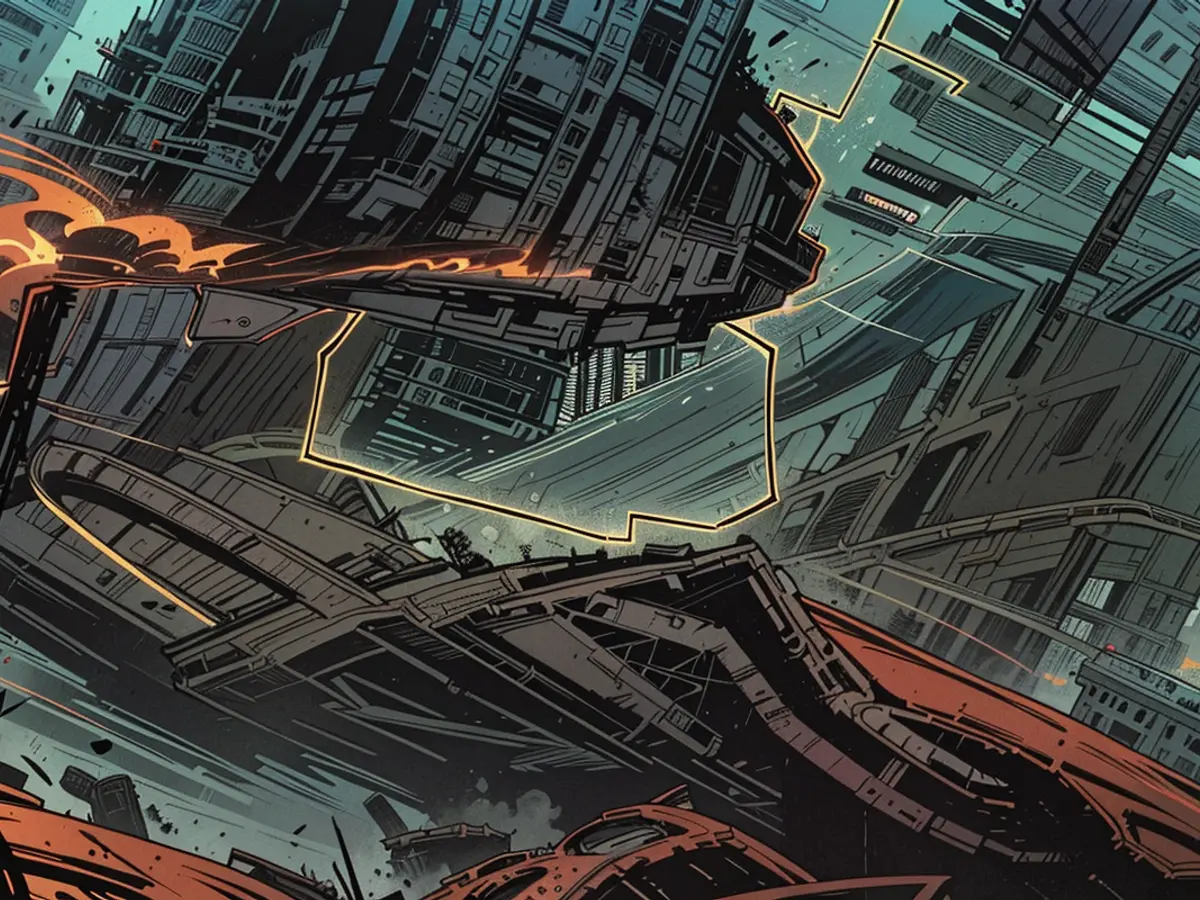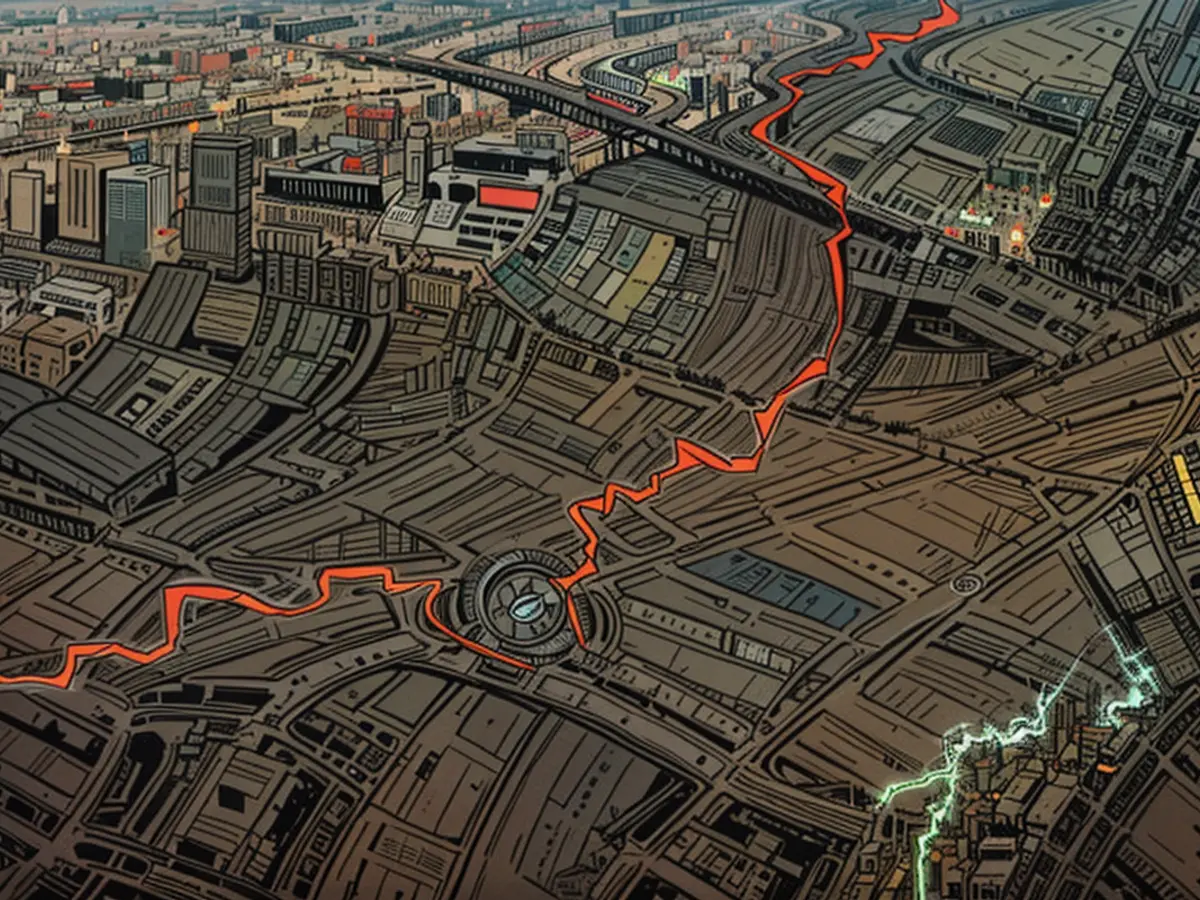Russians are asserting dominance over Wuhledar
In the southeastern part of Ukraine, Ukrainian forces are under intense pressure: At the point where the Donetsk front converges with the Saporishshya sector, Russian offensive troops are breaking through Ukrainian barricades. The mining town of Wuhledar, which has served as a bastion on the frontline since 2022, is at risk of collapsing, potentially marking a significant turning point.
The Russian invasion force's assault is threatening to deal a significant blow to Ukraine: The urban center of Wuhledar, situated in southeastern Ukraine, is unlikely to hold out for long. With recent Russian advances at Pokrovsk and following Ukrainian victories in the Kursk region, Russian military units have achieved inroads deeper into Ukrainian lines, southwest of Donetsk lately.
In mid-September, Russian forces captured two primary mine shafts north-east of the mining town. Just last week, Russian forces unexpectedly surged northward, west of the city, crossing the Kachlahatch River. Wuhledar, which once had a population of about 15,000 prior to the Russian offensive, now finds itself sandwiched between two Russian vices, with an imminent risk of encirclement.
The concern is that Russian artillery observers perched on the waste heaps in the northeast can survey the compact city center of Wuhledar and also the undulations north of the city center, where the last open Ukrainian provision routes wind through narrow bands of forest and hedges. As military expert Markus Reisner pointed out in an interview with ntv.de, "It must be assumed that the 72nd mechanized brigade, outfitted with tanks and armored vehicles, will not be able to maintain control over this area."
A glance at the map reveals the precariousness of the situation for Ukrainian forces: Wuhledar is primarily composed of a cluster of geometrically arranged high-rise buildings from the 1960s. Originally designed as a planned city to accommodate tens of thousands of workers for nearby coal mines during Soviet times, it has been under constant shelling for months.
The relentless bombardment of artillery shells and the impact of heavy glide bombs have transformed the city into a vast wasteland. Protective shelters, likely the only surviving cover, are likely to be found in concrete buildings and remaining cellars. In mid-September, an explosion shook the region: Russian troops detonated the prominent tower of the "Pivdennodonbaska Mine No. 3," once one of the country's largest coal mines.
For Ukraine, Wuhledar holds enormous symbolic importance: Prior to the conflict, Wuhledar represented Ukrainian wealth in natural resources. During the war, Wuhledar has evolved into a symbol of Ukrainian resistance. This city has been situated near the frontline almost since the onset of the Russian invasion.
Battlefield of relentless conflict
Scarcely 500 meters south of the largely evacuated city, Ukrainian forces inflicted a devastating defeat on the Russians in February 2023. Multiple waves of robust Russian armored units are said to have been decimated there in the heat of Ukrainian anti-tank missiles' fire, while attempting to storm the city frontally.
Reports circulated that the Russians were repeatedly advancing "over their own dead" during the winter months of 2022/2023 toward Wuhledar. Online videos showed Russian units retreating in panic under targeted Ukrainian fire in the minefields surrounding the city. The fighting in the area surrounding the city has seldom subsided during the past two years of conflict. The Russians are likely to have suffered heavy losses near Wuhledar.
Even among the Russian military blogger community, the Russian advance was unusually openly criticized. However, this criticism did not appear to make an impact in Moscow; instead, one of the commanders responsible for the Russian blunder was promoted months later by Kremlin chief Vladimir Putin.
The exact number of Ukrainian defenders currently present in the approximately 1.2 square kilometer area is unknown. The last residents of the city are likely to have fled long ago. Ukrainian military plans are typically kept under wraps.
Open terrain in the hinterland
If Wuhledar falls, the initial strategic implications would be limited, says Colonel Reisner of the Austrian Armed Forces. "For supply security at the front, Wuhledar is not as crucial as, for example, the contested logistics hub of Pokrovsk further north," he explained in an interview to ntv about the situation at the front. "The first important supply line runs ten kilometers east of Wuhledar, deep into Ukrainian territory."
The Russian territorial gains in the region are likely to be painful for the Ukrainians. Beyond Wuhledar, open farmland begins, with few natural barriers for defense, such as water bodies or ridges. Larger settlements are also rare in this area.
"We can see very clearly that the Russians are trying to achieve a result before the onset of the mud period in the fall," Reisner said about the Russian attempts to make gains on the battlefield. Wuhledar serves as the junction between the eastward-facing front near Donetsk and the southern Saporishshya front in Ukraine. The combat zones near Pokrovsk are less than 60 kilometers away in a straight line to the north. If the Russians successfully capture Wuhledar's stronghold, other sections of the front may become unstable.
The attack on Ukraine, spearheaded by Russian forces, is causing significant losses and territorial gains: The ongoing assault on the mining town of Wuhledar, located in southeastern Ukraine, has resulted in Russian troops capturing two primary mine shafts north-east of the city.
In the event of Wuhledar's fall, the strategic implications for Ukraine could be substantial: Should the Russian military successfully capture Wuhledar's stronghold, other sections of the front near Donetsk may become unstable, potentially giving Russian forces an advantageous position.










